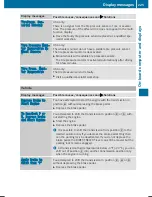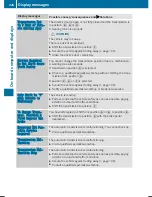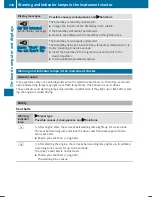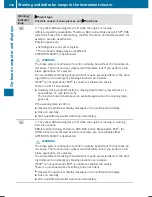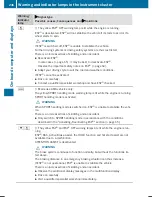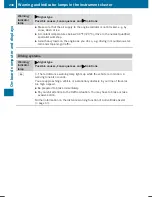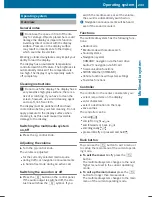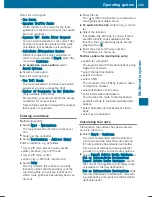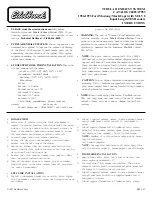
Warning/
indicator
lamp
N
N
Signal type
Possible causes/consequences and
M
M
Solutions
?
N
The red coolant warning lamp comes on while the engine is running.
The coolant level is too low.
If the coolant level is correct, the airflow to the engine radiator may be blocked
or the electric engine radiator fan may be defective.
The coolant is too hot and the engine is no longer being cooled sufficiently.
X
Observe the additional display messages in the multifunction display.
X
Pull over and stop the vehicle safely and switch off the engine, paying atten-
tion to road and traffic conditions.
X
Secure the vehicle against rolling away (
Y
page 145).
X
Leave the vehicle and keep a safe distance from the vehicle until the engine
has cooled down.
X
Check the coolant level and add coolant, observing the warning notes
(
Y
page 276).
X
If you have to add coolant frequently, have the engine cooling system
checked.
X
Make sure that the air supply to the engine radiator is not blocked, e.g. by
snow, slush or ice.
X
Do not start the engine again until the coolant temperature is below 248 ‡
(120 †). Otherwise, the engine could be damaged.
X
Drive to the nearest qualified specialist workshop.
X
Avoid heavy loads on the engine as you do so, e.g. driving in mountainous ter-
rain and stop-and-go traffic.
?
N
The red coolant warning lamp comes on while the engine is running. A warn-
ing tone also sounds.
The coolant temperature has exceeded 248 ‡ (120 †). The airflow to the
engine radiator may be blocked or the coolant level may be too low.
G
WARNING
The engine is not being cooled sufficiently and may be damaged.
Do not drive when your engine is overheated. This can cause some fluids which
may have leaked into the engine compartment to catch fire.
Steam from the overheated engine can also cause serious burns which can
occur just by opening the hood.
There is a risk of injury.
X
Observe the additional display messages in the multifunction display.
X
Pull over and stop the vehicle safely and switch off the engine, paying atten-
tion to road and traffic conditions.
X
Secure the vehicle against rolling away (
Y
page 145).
X
Leave the vehicle and keep a safe distance from the vehicle until the engine
has cooled down.
X
Check the coolant level and add coolant, observing the warning notes
(
Y
page 276).
X
If you have to add coolant frequently, have the engine cooling system
checked.
Warning and indicator lamps in the instrument cluster
239
On-bo
ard
co
mput
er
and
displays
Z

